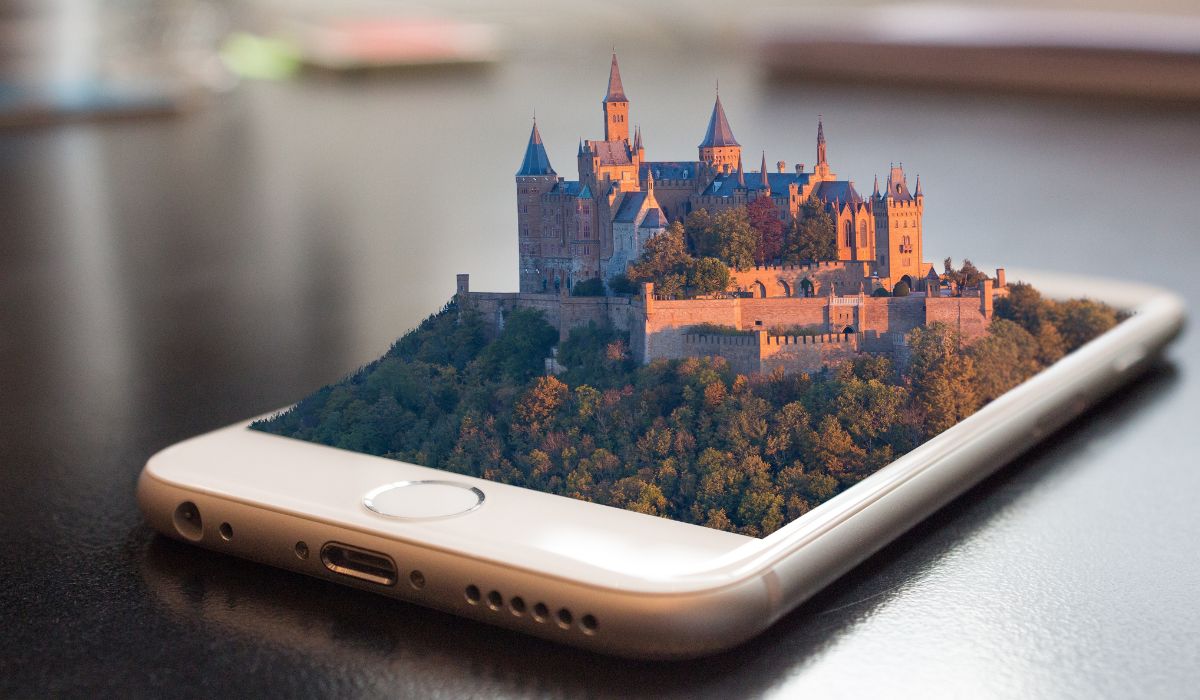While AR has been around for years, it is still confused with virtual reality (VR) – despite the two technologies offering quite different utilities and experiences. While VR refers to creating a whole new virtual world, which simulates the real world, AR takes the real world and augments computer-generated images, figures and landscapes onto it to provide a more immersive experience to the users.
The growth of AR technology is gradually transforming various industries, from marketing to manufacturing and healthcare. Notwithstanding, a whole range of new businesses are springing up to utilize this futuristic technology, but none more than the social media industry.
For a decade or so, augmented reality (AR) has taken over the social media market, with platforms like Snapchat, Facebook, and Instagram adopting this novel technology. Today, billions of social media users use AR to enhance their posts and selfies. The most significant application of AR to date, besides social networks, is the Pokemon Go game, which allows players to search for rare Pokemons around their surroundings and landscapes.
How augmented reality is making its mark on global industries
Integrated augmented reality is already a big part of many global industries, from e-commerce to branding, education, and gaming. AR technology has been widely incorporated by e-commerce retailers to help customers fit and try on products such as makeup, clothing, accessories, and even furniture before making a purchase, leading to higher confidence in buying decisions.
Moreover, schools are increasingly adopting interactive learning techniques – using AR technology to make learning more interactive by providing students with immersive experiences, from exploring 3D models of complex subjects to interactive history lessons at historical sites and training simulations in industries such as medicine and aviation.
Notwithstanding, mobile AR games such as Pokemon GO expound on the potential of AR in gaming, creating a novel way of playing games whereby a player exercises as they enjoy the virtual gaming experience.
However, the use of AR technology in social media remains the most popular utility – translating to a mass adoption of the technology worldwide. From AR filters and lenses to AR shopping, a novel feature of the technology on social media sites, the technology is transforming the social media industry.
AR x Blockchain Technology: Bringing Digital Data To the Real World
Despite the massive growth of AR, persistent challenges that cripple the Web 2 internet age are also impacting the growth of this technology – the biggest challenge being data ownership and management. The marriage between blockchain and AR could solve these problems and seismically impact the future of multiple industries, especially social media.
- Unique identities on social media
Blockchain technology introduces asset uniqueness via non-fungible tokens (NFTs), whereby each NFT represents its own distinct characteristics and value. This creates a different dynamic on how AR can be used across social media. For instance, Cappasity, a decentralized AR/VR ecosystem for 3D content exchange and e-commerce, allows 3D object creation that can be used on social media sites.
This may allow social media retailers to create unique 3D objects that create an immersive virtual shopping experience for the customer. Blockchain technology allows these 3D content creators to produce, rent, and sell unique 3D images directly on the Cappasity marketplace. As they are on the blockchain, every image is assigned its own unique “number” preventing copyright infringement.
- A decentralized future for social media
Another Web 3 company that stands out is Peer Inc., which aims to merge AR and social media on a decentralized platform. The firm looks to introduce the immersive experience of AR to decentralized social platforms via its recently launched Peer SuperApp, including an AR-powered social platform (Peer Subspace), AR glasses and headsets.
The company provides its decentralized federated identity (DFI) to every social media user, allowing them to own their entire digital footprint from social and media content they’ve collected throughout their lives. Additionally, users can create public utilities (access tokens) to their data so they won’t need to share their DFI with each service they sign up with, decreasing their vulnerability on the net.
Finally, Peer Inc. is also building an AR-based social media network, Kudzu, atop its high-tps blockchain. The network aims to solve the challenges affecting current social platforms, such as echo chambers, fake news, and misinformation, given the immutability of blockchain technology. The platform will also allow every user to own their data and monetize it as they see fit.
The future of AR and Blockchain in social media
Social media is evolving day by day as humans’ ingenuity, desire to connect, and technology grow. The integration of AR and blockchain could be a major turning point for the industry, as AR shopping, interactive posts and more complex technologies are built atop of these technologies.
With loads of data collected on social media, the growth of decentralized social platforms such as Cappasity and Peer Inc. will transform the AR social media space, allowing users to own and monetize their data, removing the absolute control that big data companies currently have over social media platforms. Additionally, AR content creators can create unique and verifiable virtual assets without fear of copyright infringements.
